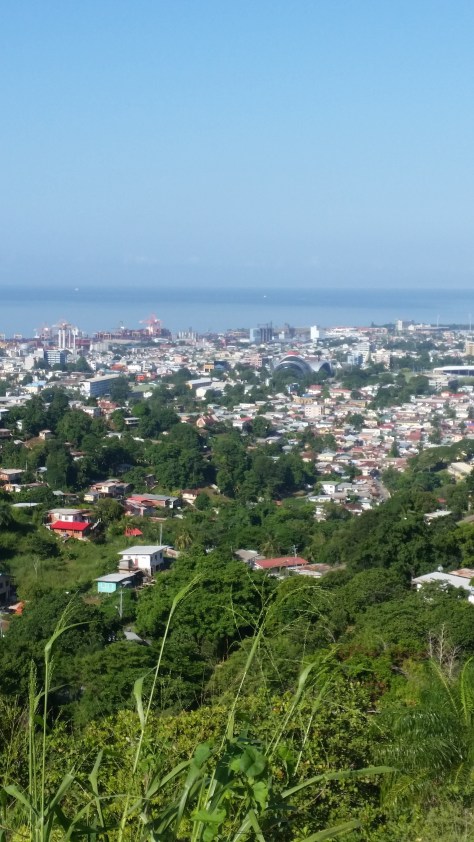by Keturah Nix
Note: This is the third in a series of blogs from students who participated in the BCC’s Fall 2014 Research Tour to Trinidad & Tobago on Oct. 10-15.
While on the trip to Trinidad and Tobago a phrase that was stated stuck with me: “Look through the mask and see the expression of the people.” This was briefly said in a demonstration workshop we attended conducted by Matthew Wiley who portrays the traditional bat character in the Carnival celebration. For me, this phrase helps to contextualize the experience. When thinking about a mask, there are two perspectives, the one from the onlooker and the one from behind the mask. On this trip, we were able to experience both angles.
As an onlooker, we participated in a Carnival re-creation celebration at Queen’s Park Savannah in Port of Spain where we learned about the signature Carnival characters and their African origins and connections. This experience was enlightening because I was introduced to the history of Carnival in Trinidad. Learning that the origins of many of the characters are exaggerated representations of the slave masters and the slave experience was very interesting. For instance, the Blue Devil, a popular yet frightful character is a representative of the lost slave souls from the Middle Passage to the island and the ones who died and were killed working the fields. The Blue Devil goes around with a sticky substance on his or her body forcefully beckoning for money from crowd members and threatening to smear the sticky substance and blue paint over people. We found out that the sticky substance is molasses and it symbolizes the sugar cane fields in which the slaves had to work. The reasoning behind this character’s petitioning for money serves as the symbolic payment for those slaves and servants who never received payment for their endless work. It is a devil embodiment because many of the slaves viewed the White slave masters as the devil. This and other characters have similar roles chronicling the slave experience in the entire Carnival event.

As part of seeing the mask from the inside, two workshops I believe helped with this are the Idakeda Group ‘s workshop on “Anansi and the Drum” and the Extempo workshop with Calypso artists “Short Pants” and “Lord Superior.” The Idakeda workshop was an intense 4 ½ hour session of learning about African storytelling in the Caribbean. In this workshop we engaged in song, dance, and acting to help foster a historical perspective to the slave experience. In the Extempo workshop we had an opportunity to hear and even engage in what would be considered freestylin’ but with a more political and international twist. This was fun because old and young Calypso artists explained the importance of Calypso in Trinidadian culture and we were able to feel the fun, lighthearted, and informational vibe extempo can possess.
One of my favorite days on the trip was when we went on a glass bottom boat in the Caribbean Sea to see the coral reefs. In certain parts of the sea the reefs form natural swimming pools where we had a chance to get off the boat and either snorkel or just play around in the water. After some major coaxing from friends, I ended up getting off the boat and into the water (I admit I was kind of scared because I didn’t trust my swimming skills, plus I was having sinus issues that day.) But, I must truly say that I am glad I got in the water! It was refreshing and awe-inspiring to stand and swim in the middle of the sea while looking out and seeing no land anywhere. It was a moment that I will cherish because I was literally a tiny spec in a massive ocean surrounded by water and sky. I could feel the magnitude of God’s power through nature.

These were just a few of the moments that I reflect on from my first trip to Trinidad and Tobago. While I understand that it is implausible to learn and experience every aspect about a culture or location in 5 days, I am appreciative of my experience because the exposure has helped to increase my interest in looking more at the social developments of culture and identity within this nation. I think that this trip has helped me begin to see the mask from an insider’s point of view and an outsider’s point of view so that I can better understand a rich heritage full of color, liveliness, soul, and the tradition of hosting the “Greatest Show on Earth.”

